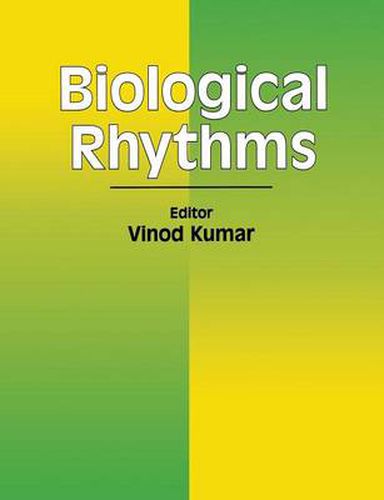Readings Newsletter
Become a Readings Member to make your shopping experience even easier.
Sign in or sign up for free!
You’re not far away from qualifying for FREE standard shipping within Australia
You’ve qualified for FREE standard shipping within Australia
The cart is loading…






This title is printed to order. This book may have been self-published. If so, we cannot guarantee the quality of the content. In the main most books will have gone through the editing process however some may not. We therefore suggest that you be aware of this before ordering this book. If in doubt check either the author or publisher’s details as we are unable to accept any returns unless they are faulty. Please contact us if you have any questions.
(Chapters 11 to 14) summarise important features of the biological clock at the level of whole animal covering all vertebrate classes (fish to mammal). Chapters 15 and 16 are on long term (seasonal) rhythms in plants and higher vertebrates. Short term rhythms (ultradian rhythms), the significance of having a clock system in animals living in extreme (arctic) environments, and the diversity of circadian responses to melatonin, the key endocrine element involved in regulation of biological rhythms, have been discussed in Chapters 17 to 19. Finally, a chapter on sensitivity to light of the photoperiodic clock is added which, using vertebrate examples, illustrates the importance of wavelength and intensity of light on circadian and non-circadian functions. A well-known expert writes each chapter. When presenting information, the text provides consistent thematic coverage and feeling for the methods of investigation. Reference citation within the body of the text adequately reflects the literature as subject is developed. A chapter begins with an abstract that enables a reader to know at the first glance the important points covered in that chapter. The chapter concludes with a full citation of references included in the text, which could be useful for further reading. The book ends with a comprehensive subject index that may be useful for quick searches.
$9.00 standard shipping within Australia
FREE standard shipping within Australia for orders over $100.00
Express & International shipping calculated at checkout
This title is printed to order. This book may have been self-published. If so, we cannot guarantee the quality of the content. In the main most books will have gone through the editing process however some may not. We therefore suggest that you be aware of this before ordering this book. If in doubt check either the author or publisher’s details as we are unable to accept any returns unless they are faulty. Please contact us if you have any questions.
(Chapters 11 to 14) summarise important features of the biological clock at the level of whole animal covering all vertebrate classes (fish to mammal). Chapters 15 and 16 are on long term (seasonal) rhythms in plants and higher vertebrates. Short term rhythms (ultradian rhythms), the significance of having a clock system in animals living in extreme (arctic) environments, and the diversity of circadian responses to melatonin, the key endocrine element involved in regulation of biological rhythms, have been discussed in Chapters 17 to 19. Finally, a chapter on sensitivity to light of the photoperiodic clock is added which, using vertebrate examples, illustrates the importance of wavelength and intensity of light on circadian and non-circadian functions. A well-known expert writes each chapter. When presenting information, the text provides consistent thematic coverage and feeling for the methods of investigation. Reference citation within the body of the text adequately reflects the literature as subject is developed. A chapter begins with an abstract that enables a reader to know at the first glance the important points covered in that chapter. The chapter concludes with a full citation of references included in the text, which could be useful for further reading. The book ends with a comprehensive subject index that may be useful for quick searches.